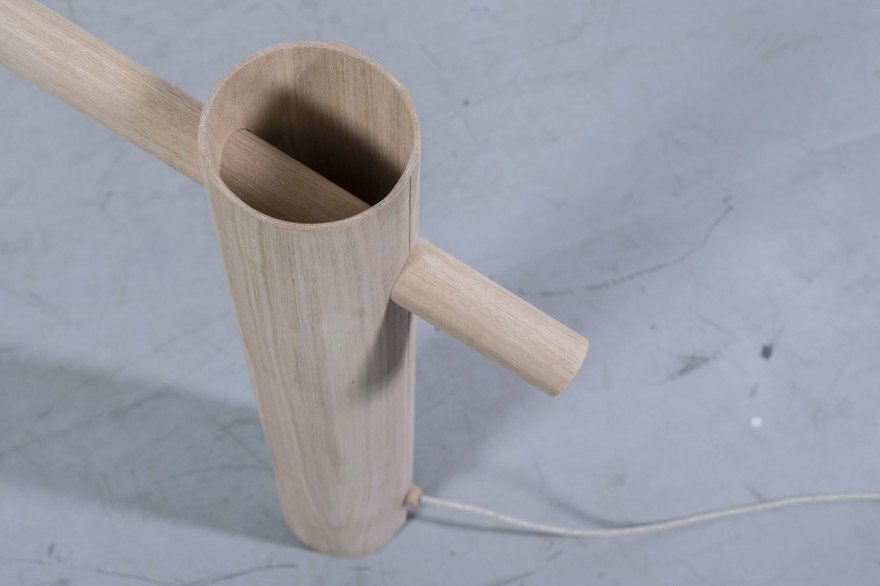Dutch Industrial Designer Creates Furniture Out of Veneers
Job van den Berg's O-Series
A lot of designers create furniture that's clad in veneers. Dutch industrial designer Job van den Berg, however, has created this O-Series of furniture that's entirely made out of veneers.



"Job van den Berg stretches material properties to new territories. He uses only wood veneer, for his O-Series, without any screws, bolts or internal structure."





"By rolling up the veneer into hollow tubes, he creates an intriguing play of structure, joints and volume. This reveals an unexpected, constructive strength of the oak veneer."





"When looking closer, you can see right through the load-bearing tubes, which plays with your perception of mass and volume."


"The cabinet and floor lamps appears heavy, but Van den Berg's clever use of material makes it actually light as a feather."



Check out more of van den Berg's stuff here.
-
oFavorite This
-
Q2Comment
K
{Welcome
Create a Core77 Account
Already have an account? Sign In
By creating a Core77 account you confirm that you accept the Terms of Use
K
Reset Password
Please enter your email and we will send an email to reset your password.


Comments
All veneer furniture is not new, the trick is making it a productive and financially viable alternative to solid wood production. Veneer layered is plywood, of which Grethe Jalk's Bow Chair from 1963 is probably the most iconic example of a successful design made in 100% plywood veneer. Veneer is strong and light, but the tooling and machining needed to make any of these items make them unrealistic to mass-produce. The only exception being the straight cylinders which have several advantages over solid dowels and have been implemented in existing products (for example the PENNE chairs by Lammhults from 2016). Many of these forms look simple but the tooling for cylinders and profiles is very high at volume. Veneer material works like solid wood and warps, expands and contracts like solid wood. The strength of the glue holding the layers in shape is the determining factor. As art objects and experiments for future development, these designs are interesting, but you are not "stretching materials to new territories". Tone down that statement and focus on the interesting contrast between material lightness contrasted by the visual weight and you really have something. I am sure technology for pushing the limits of what an be done with veneer will continue to develop as solid oak becomes more and more difficult to harvest to meet demand. Maybe it will lead to us being able to mold veneer into shapes normally reserved for plastics and metals without financial limits. Fingers crossed :-)